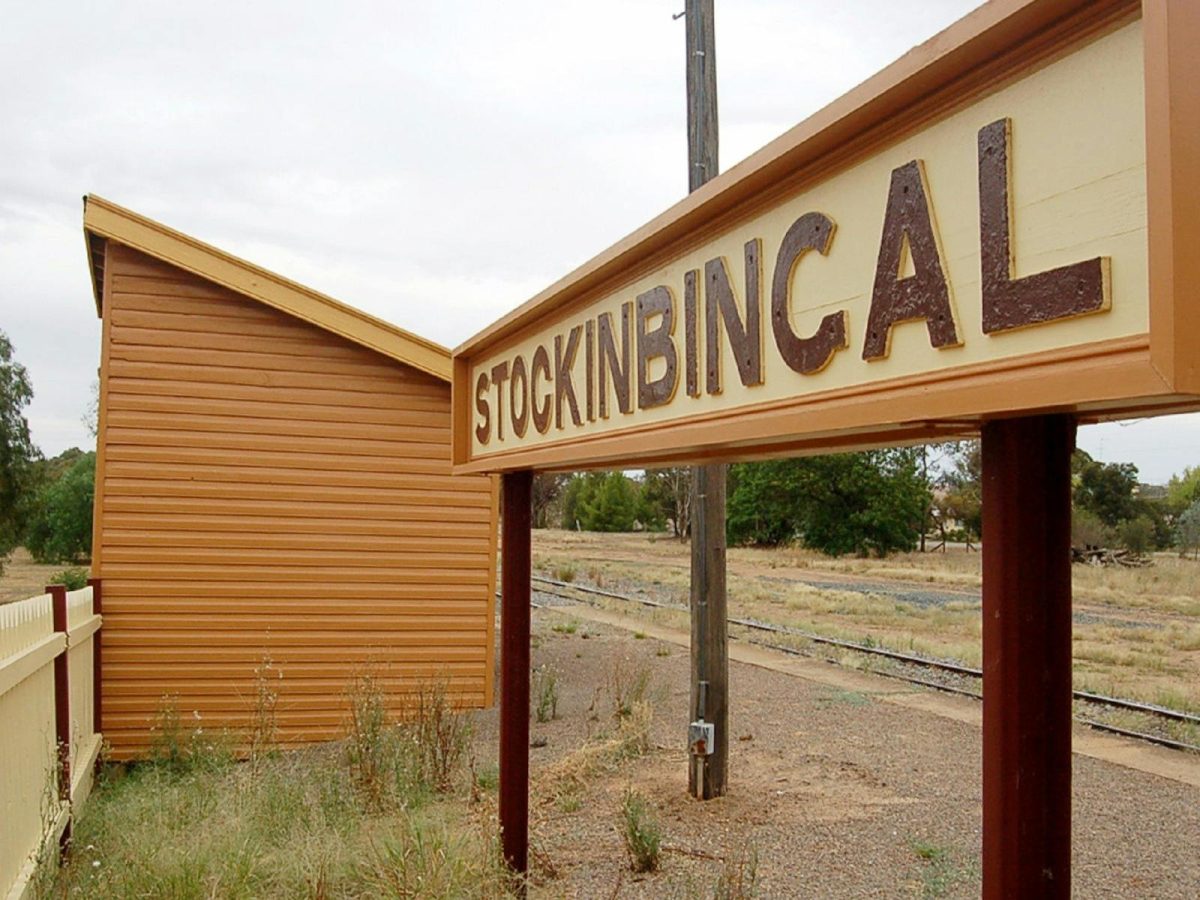
As hundreds of Inland Rail workers prepare to move into temporary accommodation just outside Stockinbingal, remnants of history still stand as a reminder of the town’s booming railway days. Photo: Visit NSW.
The tiny village of Stockinbingal, home to just 347 residents, is about to awaken to a dramatic surge in activity.
Within months, hundreds of workers building the Inland Rail line between Illabo and Stockinbingal will be living just outside town in a new temporary workforce accommodation facility.
The influx will more than double the local population, giving this quiet township a taste of its bustling railway past.
Around 60 workers have already settled in, with the facility expected to accommodate up to 350 people over the next two years as they construct 39 kilometres of the 1600 km freight rail line that will ultimately link Melbourne and Brisbane via regional Victoria, NSW and Queensland.
For a village that grew around the railway in the late 19th and early 20th centuries, this development feels like history repeating itself — a return to the days when Stockinbingal was a vital link on the Southern railway line.
READ ALSO: Stockinbingal’s community steps up to save historic church
It took 45 years from the area’s first settlement in 1848 for Stockinbingal to step into the spotlight, evolving from a modest pastoral settlement into a thriving transport hub.
Its early days were marked by Cobb & Co coaches pulling up outside William O’Brien’s Carrington Hotel before the arrival of the railway changed everything in 1893 with the opening of the Cootamundra to Stockinbingal line, part of the broader Cootamundra-Temora branch.
The original railway station featured a simple iron shelter, soon joined by a stationmaster’s cottage, goods shed and loading bank. For a time, it also became the heart of the community as it hosted the post office between 1898 and 1909.
Construction of the line from Stockinbingal to Forbes began in 1912, officially opening in 1918 and cementing Stockinbingal’s place as a key junction for both passenger and freight services.
In that role, it would become a bustling rural centre, bursting with development as businesses, banks, schools, churches and saleyards swiftly staked claims as the railway continued to carry passengers, grain and goods across the region.
As road transport expanded and rail travel waned, Stockinbingal’s population declined — from 650 in 1928 to just 354 by 1940.
When passenger train services were eventually withdrawn between the 1970s and 1983, the town’s bustling railway era drew to a close.
Yet the line itself remains active, serving as an important freight corridor for interstate haulage, still transporting loads past the ghostly historic streetscape that remains, including the sweet Federation-era railway station, which offers a lasting glimpse into the town’s more prosperous past.
Now, more than a century after trains first put Stockinbingal on the map, the village is poised to play a critical role in the future of Australia’s freight network.
The new Inland Rail connection will link Stockinbingal with existing and future lines, putting the town back at the centre of regional activity and that activity near the centre of town.
The 7.7-hectare accommodation site, in Grogan Road, about two kilometres north of town, is just part of the equation.
According to Inland Rail Illabo to Stockinbingal project director Conrad Strachan, the site is vital to supporting the workforce and ensuring they have a “home away from home” while delivering the project.
Each room features an ensuite, while shared amenities include a central dining hall, recreation room, gymnasium, convenience store, laundry, car parking and landscaped outdoor areas.
More than 260 beds are already installed, with final construction expected by the end of October, and Mr Strachan said the workers were already engaging with the local community.
“We’re proud to be part of Stockinbingal as we work towards delivery of this important section,” he said.
Councillors from Cootamundra-Gundagai Regional Council (CGRC) recently toured the facility, inspecting operational amenities including the kitchen, laundry and gymnasium.
Mayor Abb McAlister said the group was impressed.
“Crs [Gil] Kelly, [Les] Cooper and [Logan] Collins attended the site visit along with interim general manager Roger Bailey,” he said. “They reported the site was state-of-the-art for that type of accommodation.”
Mr Bailey added that the camp would provide clear benefits to the region.
“The workers’ camp being established here will create a number of opportunities for the community,” he said.
The accommodation facility is just one part of a broader construction effort that has already revitalised sections of the Main Southern railway line.
The Illabo-Stockinbingal section of Inland Rail involves building a 39 km greenfield corridor from east of Illabo, tracking north to Stockinbingal, bypassing Cootamundra and Bethungra and avoiding the steep, winding Bethungra Spiral to create a faster, more efficient freight link.
READ ALSO: When 50 men searched for the naked lady who roamed the Cootamundra hills
During recent works, crews reconstructed more than 830 m of old rail formation and upgraded three under-track utility crossings.
The project involved removing the worn rail, 900 sleepers and 10,000 tonnes of degraded earth before laying 5000 tonnes of new capping and 3500 tonnes of ballast, returning the line to full service.
As construction gathers pace, Cr McAlister said the anticipated arrival of hundreds of workers marked more than a population surge for the town.
“It signals a new chapter in the town’s railway story, reconnecting its proud past to Australia’s freight future,” he said.
